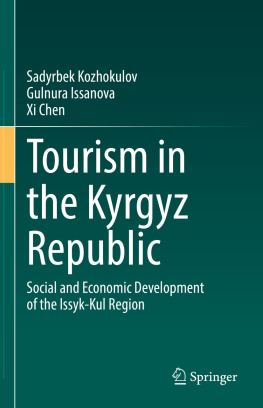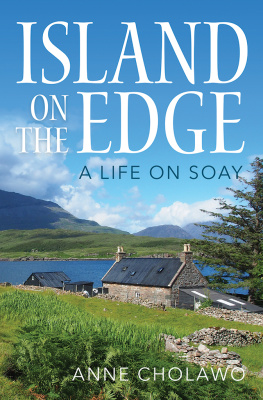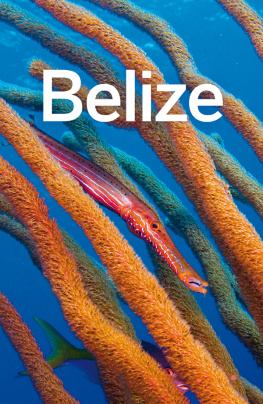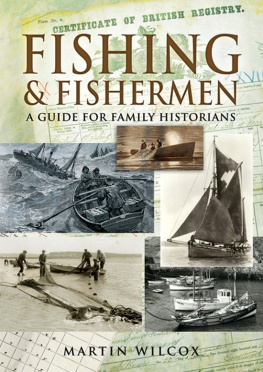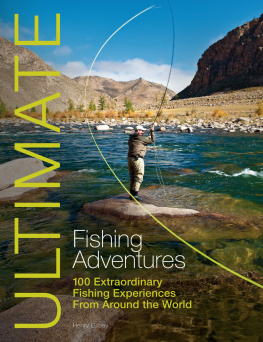First published 1986 by Westview Press
Published 2018 by Routledge
52 Vanderbilt Avenue, New York, NY 10017
2 Park Square, Milton Park, Abingdon, Oxon OX14 4RN
Routledge is an imprint of the Taylor & Francis Group, an informa business
Copyright 1986 by Anne Sutherland
All rights reserved. No part of this book may be reprinted or reproduced or utilised in any form or by any electronic, mechanical, or other means, now known or hereafter invented, including photocopying and recording, or in any information storage or retrieval system, without permission in writing from the publishers.
Notice:
Product or corporate names may be trademarks or registered trademarks, and are used only for identification and explanation without intent to infringe.
Library of Congress Catalog Card Number: 86-50946
ISBN 13: 978-0-367-01174-1 (hbk)
In the summer of 1972, to escape the unrelenting heat of Northern Belize where I was heading an anthropological expedition, I got into a sweaty cargo barge, inappropriately named 'The Mermaid', and chugged out to a small island called Caye Caulker that lies off the coast of Belize. As I stepped off the boat onto the back pier, mosquitoes landed on my arm in such numbers I could brush them off like bread crumbs on a table. I walked from the back pier past a shed where a generator alternately throbbed and clanked, on past the town garbage dump festering in a mangrove swamp, and entered a small village with two sand lanes of wooden plank houses on stilts. As I moved towards the windward side of the island, the warm Caribbean breeze became stronger, the numbers of mosquitoes thinned out, and I could see the waves breaking on the reef less than a mile out to sea. The sun beat on my head through a clear blue sky. The only sounds were those of the water lapping against piers poking out into the water, the soothing breeze rustling through the coconut fronds, and an occasional pelican splash landing in the water. People padded by silently with bare feet on soft sand, nodded disinterestedly, and went on about their business.
Caye Caulker felt like total isolation. Here was a fishing village whose only contact with the mainland of Belize was by boat, often a whole day's trip by sail or several hours twice a week on the Mermaid. There was no telephone on the island, hence no rapid way to contact the rest of the world. Visitors were obviously rare since there were no hotels. I spent the night on the veranda of a vacant house, and in the morning I searched the island for a place to buy a meal. In sheer desperation, I found Annette, one of a handful of resident Americans on the island, who made me a cup of coffee and scrambled eggs in exchange for news from abroad.
She also told me the local behavioral rule of thumb, "Whatever you do, people won't interfere. They're very tolerant except when you try to tell them what to do." Later, I discovered what she meant. When Clayton Adams was robbed of an expensive skiff motor for the sixth time in one year, he decided he would have to store the motor under his house instead of leaving it on the boat. Even though he knew the identity of the thief for at least some of the robberies, he shrugged it off with the comment, "He probably needed the money more than I do." Reluctant to interfere with each other, they are tolerant of foreign visitors as well.
Since 1972, I have visited Caye Caulker regularly, but in 1982 I decided to take a serious interest in the island. Even in 1982 Caye Caulker was a village that to the naked eye appeared poor, isolated, and undeveloped. The houses, still square wooden plank structures on stilts, were peeling and weathered. Everyone walked around barefooted and wore faded well-worn clothing. There was now one telephone line (with many extensions). News from the outside as well as messages from relatives and friends in other parts of the country came over the single radio station, Radio Belize.
These appearances were and still are totally misleading. The peeling paint, the worn clothes and the bare feet, all reasonable results of the Caribbean trade winds and sandy lanes, belie the real conditions on Caye Caulker. In less than ten years Caye Caulker has become one of the wealthier communities in Central America. Furthermore, the wealth is distributed among all big island families, and the island's culture and social organization have emerged from sudden wealth without major upheaval. In spite of an influx of major consumer goods such as refrigerators, gas stoves, washing machines, fast skiffs, and big boat motors, major services such as electricity and plumbing, and contact with several hundred tourists a year from all continents, Caye Caulker looks nearly the same as it did on my first visit twelve years before.
What happened during the intervening years is a case study in success. It is the success of a group of fishermen who, through a locally organized and controlled fishing co-operative, have turned their efforts into a lucrative fishing business. Their success is not merely financial, it is also cultural. The combination of cultural compatability and economic development is a story worth telling.
This book is based on the research of a variety of people using diverse methods under many different conditions. It is a co-operative work in many ways. Over a span of twelve years, I have observed Caye Caulker, and Belize in general, on numerous visits. During this time, I led four field trips to the island of approximately one month duration, accompanied by undergraduate students from Macalester College in June 1983 (six students), January 1983 (ten students), January 1984 (ten students) and January 1985 (twenty-one students). All of these students wrote research papers as part of the larger project. In addition to my own participant observation during these field trips and the work of these students, I have benefited from the observations and stories of my mother, who lived on the island between 1973 and 1977 as a member of an island kin group through her marriage to an islander. In conversation and through her numerous letters she has added valuable information and insights to this project. The data for this book therefore comes from three sources: 1) my own participant observation over twelve years, 2) the participant observation of my mother living as another member of the community and 3) the student projects undertaken during four formal field trips. Among these students, the most valuable contribution has come from Laurie Kroshus who participated in two of the field trips and has worked with me closely in writing up the results. She is largely responsible for and VIII.



